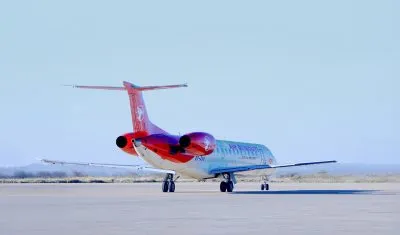Sub-Saharan Africa may be the most dangerous region in the world to board a flight, but statistics for aircraft crashes on the continent rarely tell the full story.
For example, in 2014, although the hull loss rate for turboprop aircraft in Africa was six times the global average, the equivalent figure for jet aircraft was zero. In fact, statistically speaking, passengers were safer aboard a jet aircraft in sub-Saharan Africa than in Europe, North America, South America, the Arab world and most of Asia.
On top of variations by aircraft type, there are also sub-regional distinctions. Experts often lament that a handful of countries bring down African safety scores. And the one country that is almost always singled out as underperforming is the Democratic Republic of Congo (DRC).
Indeed, there have been 20 aircraft crashes in the DRC since 2010, according to the Aviation Safety Network. Half were fatal, including the loss of more than 70 people when a Boeing 727 operated by Hewa Bora Airways crashed in Kisangani in 2011.
The country’s grim track record even prompted the European Union to ban all 58 DRC-based airlines from entering its airspace. Although Kinshasa opposes the EU blacklist, it acknowledges safety shortcomings and has made several efforts to tap foreign expertise.
Its latest overture – to Air France – came alongside a commitment to launch the new flag-carrier, Congo Airways.
“We were approached by the Congolese government, who asked Air France for support in setting up a new national carrier,” explains Frank Legré, Air France’s senior vice-president for Africa. “Unfortunately DRC does not have a very good track record in terms of flight safety, so we were very much willing to help.”
After developing a business plan for the state-owned company last year, Air France Consulting assisted Congo Airways with sourcing aircraft and securing the necessary flight certificates. The airline will reportedly serve eight Congolese cities to begin with, before branching out to 54 domestic and overseas destinations.
Air France will not become a shareholder in Congo Airways, but hopes the partnership will strengthen its four-times-a-week service from Paris to Kinshasa, mainly by sucking up traffic from Lubumbashi, DRC’s second-largest city.
The French flag-carrier is also looking to cooperate with the Congolese government in other ways. “Setting up the new airline is one thing,” says Legré. “Another thing is [considering] how can we help the Civil Aviation Authority to abide by the ICAO [International Civil Aviation Organisation] rules, and make sure that they are slowly but surely moving off the [EU’s] security list.”
As the second-largest country in Africa, DRC desperately needs reliable, safe airlines to connect its citizens and promote economic development. The current patchwork of small, independent operators is failing by every measure. But success for Congo Airways is not a foregone conclusion. Two earlier flag-carriers – Air Zaire and Congolese Airlines – both ended in failure, and Air France will face an uphill struggle to rehabilitate Africa’s most damaged aviation sector.
Want to continue reading? Subscribe today.
You've read all your free articles for this month! Subscribe now to enjoy full access to our content.
Digital Monthly
£8.00 / month
Receive full unlimited access to our articles, opinions, podcasts and more.
Digital Yearly
£70.00 / year
Our best value offer - save £26 and gain access to all of our digital content for an entire year!

 Sign in with Google
Sign in with Google 


